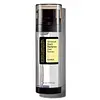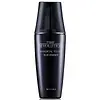What's inside
What's inside
 Key Ingredients
Key Ingredients

 Benefits
Benefits

 Concerns
Concerns

No concerns
 Ingredients Side-by-side
Ingredients Side-by-side

Snail Secretion Filtrate
Skin ConditioningButylene Glycol
HumectantNiacinamide
Smoothing1,2-Hexanediol
Skin ConditioningBetaine
HumectantPanthenol
Skin ConditioningWater
Skin ConditioningGlycerin
HumectantLimnanthes Alba Seed Oil
Skin ConditioningHelianthus Annuus Seed Oil
EmollientAllantoin
Skin ConditioningCarbomer
Emulsion StabilisingMacadamia Ternifolia Seed Oil
EmollientSodium Polyacrylate
AbsorbentSodium Hyaluronate
HumectantInulin Lauryl Carbamate
Emulsion StabilisingArginine
MaskingArgania Spinosa Kernel Oil
EmollientXanthan Gum
EmulsifyingSodium Surfactin
CleansingEthylhexylglycerin
Skin ConditioningGlutathione
Snail Secretion Filtrate, Butylene Glycol, Niacinamide, 1,2-Hexanediol, Betaine, Panthenol, Water, Glycerin, Limnanthes Alba Seed Oil, Helianthus Annuus Seed Oil, Allantoin, Carbomer, Macadamia Ternifolia Seed Oil, Sodium Polyacrylate, Sodium Hyaluronate, Inulin Lauryl Carbamate, Arginine, Argania Spinosa Kernel Oil, Xanthan Gum, Sodium Surfactin, Ethylhexylglycerin, Glutathione
Water
Skin ConditioningGlycerin
HumectantButylene Glycol
HumectantNiacinamide
SmoothingLinum Usitatissimum Seed Extract
PerfumingMacadamia Ternifolia Seed Oil
EmollientHydrogenated Lecithin
EmulsifyingPentylene Glycol
Skin ConditioningLecithin
EmollientCeramide AP
Skin Conditioning1,2-Hexanediol
Skin ConditioningCetyl Ethylhexanoate
EmollientPhenoxyethanol
PreservativeCarbomer
Emulsion StabilisingPEG-60 Hydrogenated Castor Oil
EmulsifyingSqualane
EmollientCaprylic/Capric Triglyceride
MaskingCeramide NP
Skin ConditioningSodium Dilauramidoglutamide Lysine
HumectantSodium Hydroxide
BufferingPolyquaternium-51
Skin ConditioningAdenosine
Skin ConditioningParfum
MaskingSodium Ascorbyl Phosphate
AntioxidantCalendula Officinalis Flower Extract
MaskingCassia Alata Leaf Extract
AstringentPseudoalteromonas Ferment Extract
HumectantDisodium EDTA
Hydrolyzed Wheat Protein
Skin ConditioningHydrolyzed Soy Protein
HumectantEthylhexylglycerin
Skin ConditioningCaprylyl Glycol
EmollientXanthan Gum
EmulsifyingTripeptide-10 Citrulline
Skin ConditioningSh-Decapeptide-9
Skin ConditioningTripeptide-1
Skin ConditioningResveratrol
AntioxidantSodium Cocoyl Alaninate
Sodium Hyaluronate
HumectantHydroxyethyl Acrylate/Sodium Acryloyldimethyl Taurate Copolymer
Emulsion StabilisingMoringa Oleifera Seed Extract
Skin ConditioningMaltodextrin
AbsorbentCucumis Melo Fruit Extract
Skin ConditioningHydroxypropyltrimonium Maltodextrin Crosspolymer
Triethanolamine
BufferingWater, Glycerin, Butylene Glycol, Niacinamide, Linum Usitatissimum Seed Extract, Macadamia Ternifolia Seed Oil, Hydrogenated Lecithin, Pentylene Glycol, Lecithin, Ceramide AP, 1,2-Hexanediol, Cetyl Ethylhexanoate, Phenoxyethanol, Carbomer, PEG-60 Hydrogenated Castor Oil, Squalane, Caprylic/Capric Triglyceride, Ceramide NP, Sodium Dilauramidoglutamide Lysine, Sodium Hydroxide, Polyquaternium-51, Adenosine, Parfum, Sodium Ascorbyl Phosphate, Calendula Officinalis Flower Extract, Cassia Alata Leaf Extract, Pseudoalteromonas Ferment Extract, Disodium EDTA, Hydrolyzed Wheat Protein, Hydrolyzed Soy Protein, Ethylhexylglycerin, Caprylyl Glycol, Xanthan Gum, Tripeptide-10 Citrulline, Sh-Decapeptide-9, Tripeptide-1, Resveratrol, Sodium Cocoyl Alaninate, Sodium Hyaluronate, Hydroxyethyl Acrylate/Sodium Acryloyldimethyl Taurate Copolymer, Moringa Oleifera Seed Extract, Maltodextrin, Cucumis Melo Fruit Extract, Hydroxypropyltrimonium Maltodextrin Crosspolymer, Triethanolamine
 Reviews
Reviews

Ingredients Explained
These ingredients are found in both products.
Ingredients higher up in an ingredient list are typically present in a larger amount.
1,2-Hexanediol is a synthetic liquid and another multi-functional powerhouse.
It is a:
- Humectant, drawing moisture into the skin
- Emollient, helping to soften skin
- Solvent, dispersing and stabilizing formulas
- Preservative booster, enhancing the antimicrobial activity of other preservatives
Butylene Glycol (or BG) is used within cosmetic products for a few different reasons:
Overall, Butylene Glycol is a safe and well-rounded ingredient that works well with other ingredients.
Though this ingredient works well with most skin types, some people with sensitive skin may experience a reaction such as allergic rashes, closed comedones, or itchiness.
Learn more about Butylene GlycolCarbomer is a polymer of acrylic acid. Its main role is to create a gel consistency.
A high amount of carbomer can cause pilling or balling up of products. Don't worry, most products contain 1% or less of carbomer.
Ethylhexylglycerin (we can't pronounce this either) is commonly used as a preservative and skin softener. It is derived from glyceryl.
You might see Ethylhexylglycerin often paired with other preservatives such as phenoxyethanol. Ethylhexylglycerin has been found to increase the effectiveness of these other preservatives.
Glycerin is already naturally found in your skin. It helps moisturize and protect your skin.
A study from 2016 found glycerin to be more effective as a humectant than AHAs and hyaluronic acid.
As a humectant, it helps the skin stay hydrated by pulling moisture to your skin. The low molecular weight of glycerin allows it to pull moisture into the deeper layers of your skin.
Hydrated skin improves your skin barrier; Your skin barrier helps protect against irritants and bacteria.
Glycerin has also been found to have antimicrobial and antiviral properties. Due to these properties, glycerin is often used in wound and burn treatments.
In cosmetics, glycerin is usually derived from plants such as soybean or palm. However, it can also be sourced from animals, such as tallow or animal fat.
This ingredient is organic, colorless, odorless, and non-toxic.
Glycerin is the name for this ingredient in American English. British English uses Glycerol/Glycerine.
Learn more about GlycerinMacadamia Ternifolia Seed Oil is the fixed oil obtained from Macadamia nut.
Macadamia seed oil is rich in fatty acids, including oleic acid (45-75%), palmitoleic acid (7-33%), and palmitic acid (6-12%). They also contain various B vitamins, iron, and magnesium.
Palmitoleic acid has been shown to help soothe inflammation and promote wound healing. It is also naturally found in the fat of our skin.
Macadamia seed oil may not be malassezia folliculitis, or fungal-acne, safe.
Learn more about Macadamia Ternifolia Seed OilNiacinamide is a multitasking form of vitamin B3 that strengthens the skin barrier, reduces pores and dark spots, regulates oil, and improves signs of aging.
And the best part? It's gentle and well-tolerated by most skin types, including sensitive and reactive skin.
You might have heard of "niacin flush", or the reddening of skin that causes itchiness. Niacinamide has not been found to cause this.
In very rare cases, some individuals may not be able to tolerate niacinamide at all or experience an allergic reaction to it.
If you are experiencing flaking, irritation, and dryness with this ingredient, be sure to double check all your products as this ingredient can be found in all categories of skincare.
When incorporating niacinamide into your routine, look out for concentration amounts. Typically, 5% niacinamide provides benefits such as fading dark spots. However, if you have sensitive skin, it is better to begin with a smaller concentration.
When you apply niacinamide to your skin, your body converts it into nicotinamide adenine dinucleotide (NAD). NAD is an essential coenzyme that is already found in your cells as "fuel" and powers countless biological processes.
In your skin, NAD helps repair cell damage, produce new healthy cells, support collagen production, strengthen the skin barrier, and fight environmental stressors (like UV and pollution).
Our natural NAD levels start to decline with age, leading to slower skin repair, visible aging, and a weaker skin barrier. By providing your skin niacinamide, you're recharging your skin's NAD levels. This leads to stronger, healthier, and younger looking skin.
Another name for vitamin B3 is nicotinamide. This vitamin is water-soluble and our bodies don't store it. We obtain Vitamin B3 from either food or skincare. Meat, fish, wheat, yeast, and leafy greens contain vitamin B3.
The type of niacinamide used in skincare is synthetically created.
Learn more about NiacinamideSodium Hyaluronate is hyaluronic acid's salt form. It is commonly derived from the sodium salt of hyaluronic acid.
Like hyaluronic acid, it is great at holding water and acts as a humectant. This makes it a great skin hydrating ingredient.
Sodium Hyaluronate is naturally occurring in our bodies and is mostly found in eye fluid and joints.
These are some other common types of Hyaluronic Acid:
Learn more about Sodium HyaluronateWater. It's the most common cosmetic ingredient of all. You'll usually see it at the top of ingredient lists, meaning that it makes up the largest part of the product.
So why is it so popular? Water most often acts as a solvent - this means that it helps dissolve other ingredients into the formulation.
You'll also recognize water as that liquid we all need to stay alive. If you see this, drink a glass of water. Stay hydrated!
Learn more about WaterXanthan gum is used as a stabilizer and thickener within cosmetic products. It helps give products a sticky, thick feeling - preventing them from being too runny.
On the technical side of things, xanthan gum is a polysaccharide - a combination consisting of multiple sugar molecules bonded together.
Xanthan gum is a pretty common and great ingredient. It is a natural, non-toxic, non-irritating ingredient that is also commonly used in food products.
Learn more about Xanthan Gum